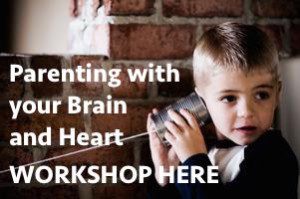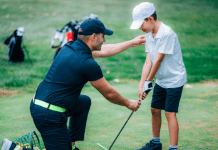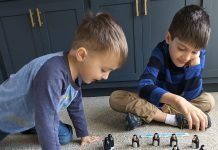Note: This post is sponsored by, and written in collaboration with, Secure Counseling, LLC.
Parenting is hard. Shaping little humans is the most difficult thing most of us have ever done. There are so many things I wish I had been open to someone teaching me before I began motherhood without my feeling like they were telling me I was already not doing it right.
It seems like the Internet mommy blog world is driven by fear that
everyone else believes we are not doing it right.
So we write monologue defenses on “don’t judge me for my choice to __________ my child.” I myself am guilty of not taking valuable advice because I thought someone was judging a choice I had to make at the time. But here’s the thing: there are some pretty clear boundaries that we agree not to cross with adults. It’s generally frowned upon to give someone the silent treatment, like traditional time outs. We are expected not to hit one another on the tushies when we make mistakes at work (in fact, doing that would probably be considered sexual harrassment in the workplace), like spanking. Socially, we are expected not to yell at others, like we yell at our kids (my personal area of growth). We do not hang our annual employee reviews on the staff room walls for everyone to see, like a sticker chart for success or failure because it would break employee confidentiality rights and be terrible for staff morale. So why would we use these strategies to discipline our children? After all, we are shaping the next generation’s interpersonal skills. We are literally wiring their brains to be empathetic or not, to have kindness and be forgiving… or not.
But when we take away these traditional forms of discipline – isolation, sharp verbal reprimands, physical punishment, negative consequences – what’s left??
So far I’ve written a couple of posts on my stance on spanking (it’s harmful no matter which way you think of it) and time outs (I don’t endorse a traditional time out with little Johnny in the corner for a determined amount of time). The overwhelming response (check the comments on the spanking post) was, “Please tell us what to do instead!”
You got it, KC.
I’m not a perfect mom, but I do have some information I wish I’d had before my children were born. This information would have saved me so much guilt and confusion. My kids would have had so many fewer Mommy Mistakes to endure while I learned the hard way. Life within my family would have been more peaceful earlier if I’d known these things, things about human behavior and feelings that we should all learn in basic science classes in middle school: science that is relevant to how we live, how we understand others, how we love romantically and how we parent. Practical, whentherubberhitstheroad science.
 While there isn’t enough word count on a blog post to share it all with you, I have compiled it in a workshop. Register here, or fill out the form at the end of this post. The workshop is two parts. The first is this Sunday, April 19, 1 p.m. – 5 p.m. The second is Sunday, May 17, 1 p.m. – 5 p.m. The class is held at University of Kansas Edwards Campus in Overland Park.
While there isn’t enough word count on a blog post to share it all with you, I have compiled it in a workshop. Register here, or fill out the form at the end of this post. The workshop is two parts. The first is this Sunday, April 19, 1 p.m. – 5 p.m. The second is Sunday, May 17, 1 p.m. – 5 p.m. The class is held at University of Kansas Edwards Campus in Overland Park.
This workshop is not one of the popular local parenting classes offered (non-specific), although many of them are great. This is a integration of strategies from different sources – the ones that are evidence-based, heavily researched and reputable. Here are three tiny pieces of what’s offered to give you a taste.
What do you do when you take away traditional forms of discipline?
First of all, we must establish ground rules. I like the Theraplay(c) Institute’s three basic family rules (and there’s a reason these are two-word phrases):
- Have fun.
- Stick together.
- No hurts.
Help your child verbally identify needs when behavior begins to spiral out of control. Using a variation of the common addiction recovery acronym H.A.L.T.S(sss), teach them to identify their needs in a healthy, verbal way, so that adaptive behaviors (whining, tantruming, hiding, lying, manipulating, you get the idea…) don’t get neurologically programmed into the brain as their default. Hold up your hand for your child in a “stop” sign. Each of your fingers represents a letter for a need, then ask your child to help you figure out which ones he needs by reaching out (if he’s able) and touching the fingers and saying the words if possible:
- H = Hungry
- A = Angry
- L = Lonely
- T = Tired
- S = Scared, shamed/embarrassed, sad, sick
In the workshop, we’ll talk about how to assess where your child neurologically is in the moment, so you know what discipline strategy to start with. We’ll watch videos of parents doing things the right way, and the wrong way (thank you YouTube), practice assessing together, and troubleshoot situations from your own home together. You can’t learn this discipline protocol from reading a blog post, but here’s the map. Rather than going to isolation (time out), negative consequence (like taking away toys or screens), physical punishment (like spanking), or verbal reprimand (like yelling or what some call “adult whining”), here’s a protocol for handling resistance, called the Levels of Engagement (c) from TCU’s Institute for Child Development:
- Playful Engagement (Redos, redirects, play through tough moments)
- When your child’s brain is still mostly “online,” use quick, high voice pitch and alternating staccato and lyrical Motherese (or Parentese or Fatherese)
- Structured Engagement (Choices, Compromises, Consequences… in that order)
- For manipulative tantrums and intentional noncompliance, voice timbre drops slightly and slows, and you begin to structure your interaction to get traction again and keep the proverbial train moving. While many parents go straight to parent-enforced consequences (as opposed to natural ones), there are several options in between!
- Calming Engagement
- This is when your child’s brain goes offline, when verbal aggression presents, and you have an all-out meltdown. In the workshop, you’ll learn more nonverbal strategies, neuro-sensory and environmental strategies than you can wrap your head around!
- Protective Engagement
- Learn what to do with physical aggression, violence, self-harm and property destruction.
















